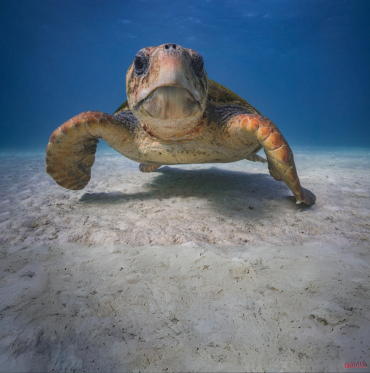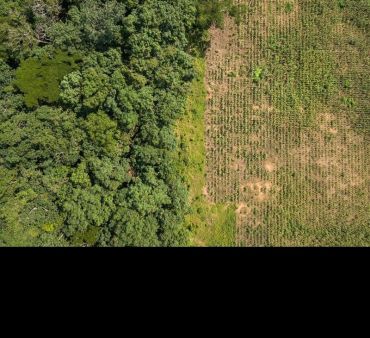University of Oxford’s Landmark Study Demonstrates Conservation Actions Effectively Halt and Reverse Biodiversity Loss
The University of Oxford has contributed to a first-of-its kind review on the success of a wide range of conservation actions. The results, published today in the prestigious journal Science, provide the strongest evidence to date that not only is nature conservation successful, but that scaling conservation interventions up would be transformational for halting and reversing biodiversity loss and reducing the effects of climate change.
I am an inveterate optimist so I find the results of this study incredibly encouraging. I hope this study will not only shed light on where and how conservation can work, but also give renewed hope to those working in the field. Further, it is a clear statement to government and industry of the need to fund conservation much more deeply, if we are to meet the objectives of the Global Biodiversity Framework, and conserve nature.
Study co-author Associate Professor Joseph Bull, Department of Biology, University of Oxford.
More than 44,000 species are documented as being at risk of extinction, with tremendous consequences for the ecosystems that stabilize the climate and that provide billions of people around the world with clean water, livelihoods, homes, and cultural preservation, among other ecosystem services. Governments recently adopted new global targets to halt and reverse biodiversity loss, making it even more critical to understand whether conservation interventions are working.
Although many studies have assessed the impact of individual conservation projects, these papers have never before been combined into a single analysis to investigate whether conservation action is working overall. For this new study, the research team conducted the first-ever meta-analysis of 186 studies, including 665 trials, that looked at the impact of a wide range of conservation interventions globally, and over time, compared to what would have happened without those interventions. The studies covered over a century of conservation action and evaluated actions targeting different levels of biodiversity, including species, ecosystems, and genetic diversity.
The meta-analysis found that conservation actions—including the establishment and management of protected areas, the eradication and control of invasive species, the sustainable management of ecosystems, habitat loss reduction, and restoration—improved the state of biodiversity or slowed its decline in most cases (66%) compared with no action taken at all. And when conservation interventions work, they were generally found to be highly effective.

For example:
- Management of invasive and problematic native predators on two of Florida’s barrier islands, Cayo Costa and North Captiva, resulted in an immediate and substantial improvement in nesting success by loggerhead turtles and least terns, especially compared with other barrier islands where no predator management was applied.
- In the Congo Basin, deforestation was 74% lower in logging concessions under a Forest Management Plan (FMP) compared with concessions without an FMP.
- Protected areas and Indigenous lands were shown to significantly reduce both deforestation rate and fire density in the Brazilian Amazon. Deforestation was 1.7 to 20 times higher and human-caused fires occurred four to nine times more frequently outside the reserve perimeters compared with inside.
- Captive breeding and release boosted the natural population of Chinook salmon in the Salmon River basin of central Idaho with minimal negative impacts on the wild population. On average, fish taken into the hatchery produced 4.7 times more adult offspring and 1.3 times more adult second-generation offspring than naturally reproducing fish.

Study co-author Associate Professor Joseph Bull, from the University of Oxford’s Department of Biology, provided crucial expertise on counterfactual impact evaluation, which compares observed outcomes to what would have happened in the absence of the intervention (the counterfactual).
He said: ‘It would be too easy to lose any sense of optimism in the face of ongoing biodiversity declines. However, our results clearly show that there is room for hope. Conservation interventions seemed to be an improvement on inaction most of the time; and when they were not, the losses were comparatively limited.’
Even in the minority of cases where conservation actions were not successful, conservationists benefited from the knowledge gained and were able to refine their methods. For example, in India the physical removal of invasive algae caused the algae to spread elsewhere because the process broke the algae into many pieces, enabling their dispersal. Conservationists could now implement a different strategy to remove the algae that is more likely to be successful.
This might also explain why the authors found a correlation between more recent conservation interventions and positive outcomes for biodiversity—conservation is likely getting more effective over time. Other potential reasons for this correlation include an increase in funding and more targeted interventions.

In some other cases where the conservation action did not succeed in benefiting the target biodiversity compared with no action at all, other native species benefitted unintentionally instead. For example, seahorse abundance was lower in protected sites because marine protected areas increase the abundance of seahorse predators, including octopus.
According to the research team, there must be more investment specifically in the effective management of protected areas, which remain the cornerstone for many conservation actions and which this study found to work very well on the whole. The authors also call for further studies to assess the impact of a wider range of conservation interventions, such as those that look at the effectiveness of pollution control, climate change adaptation, and the sustainable use of species, and in more countries.
Dr Grethel Aguilar, Director General of the International Union for Conservation of Nature (IUCN), said: ‘This paper has analysed conservation outcomes at a level as rigorous as in applied disciplines like medicine and engineering—showing genuine impact and thus guiding the transformative change needed to safeguard nature at scale around the world. It shows that nature conservation truly works, from the species to the ecosystem levels across all continents.’
The study ‘The positive impact of conservation action’ has been published in Science. This work was conceived and funded through the International Union for Conservation of Nature (IUCN) by the Global Environment Facility.

